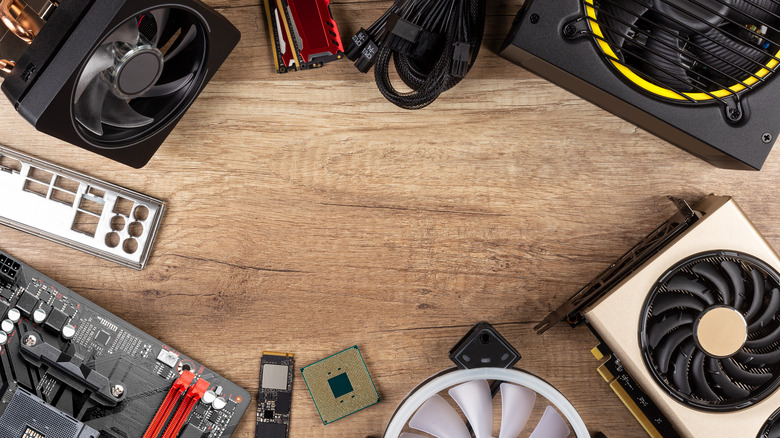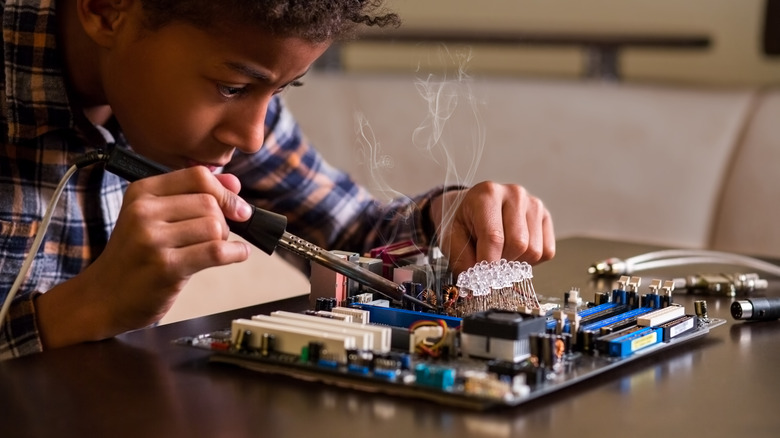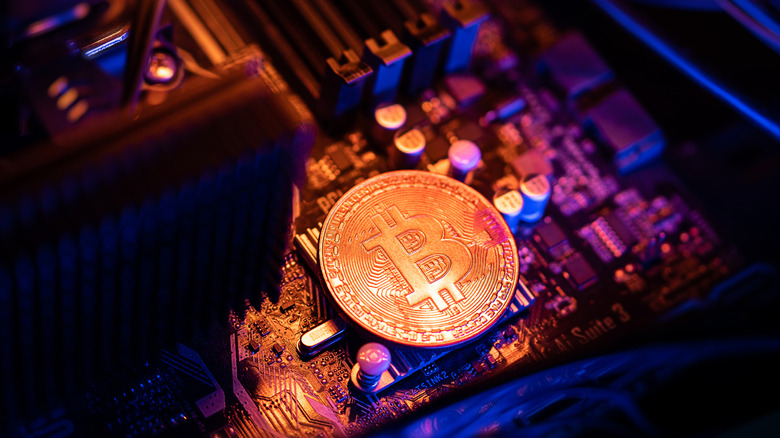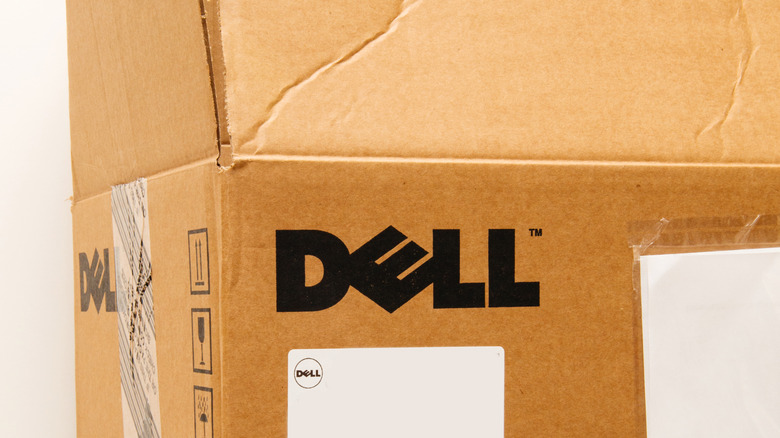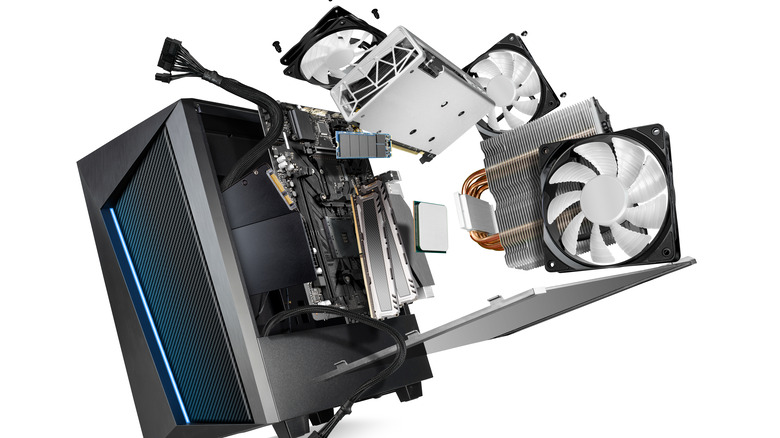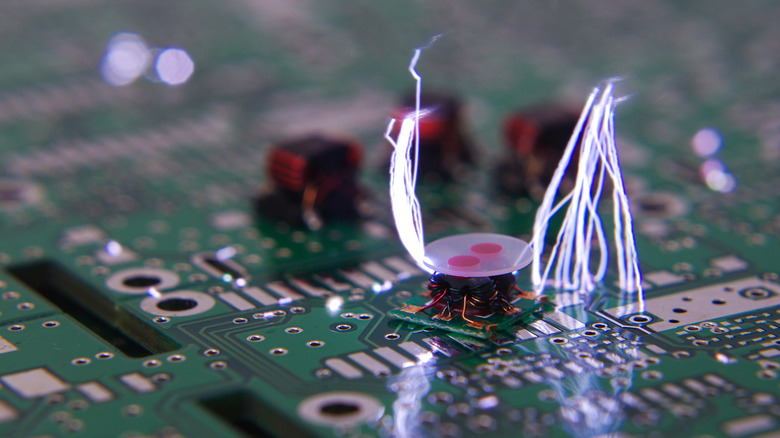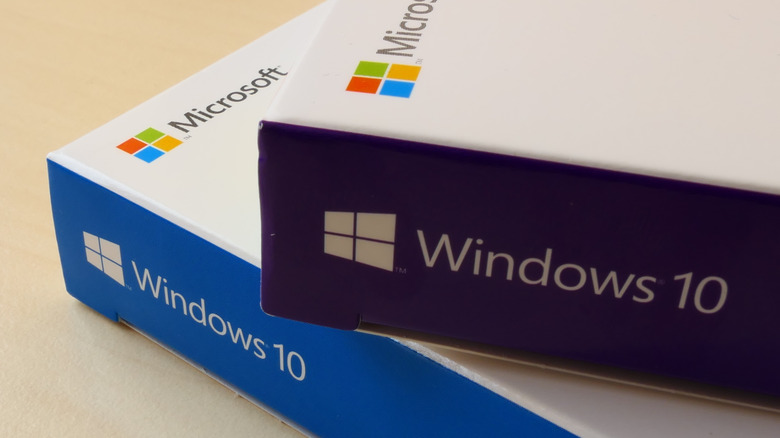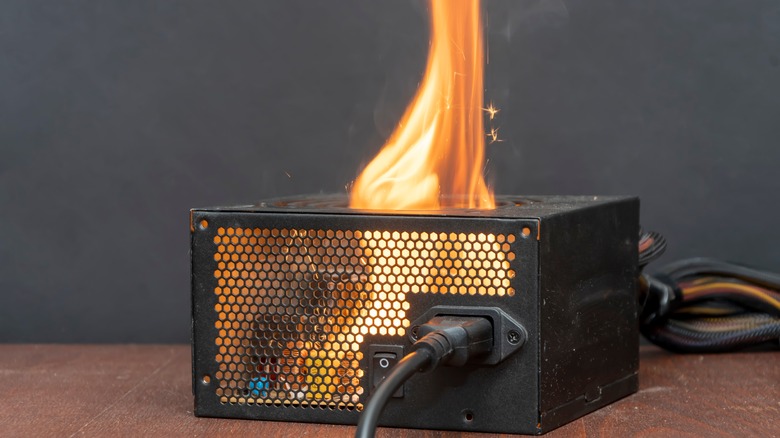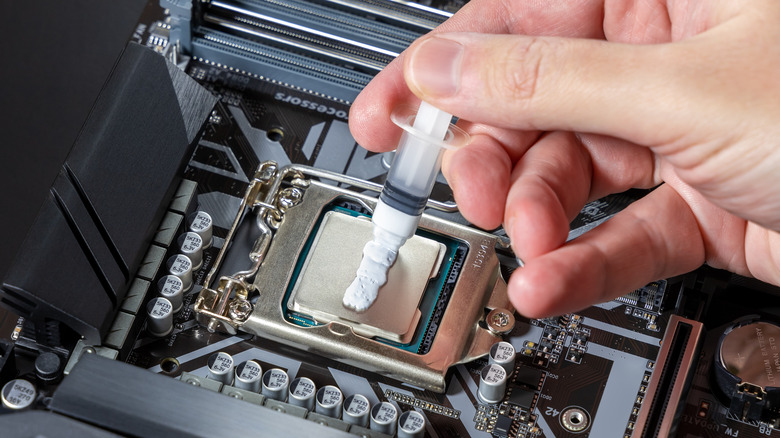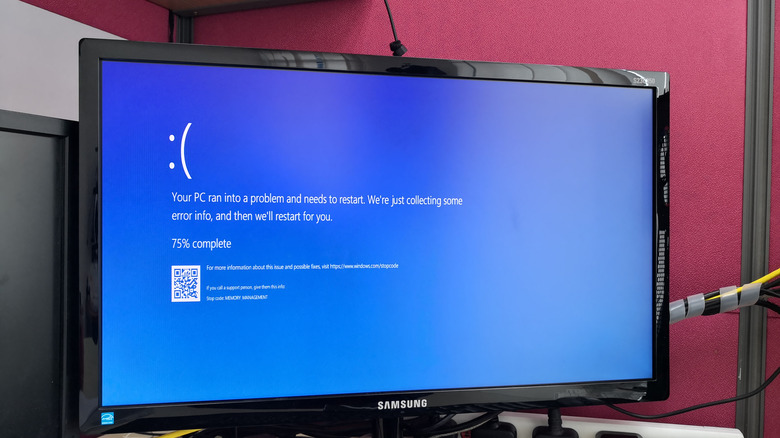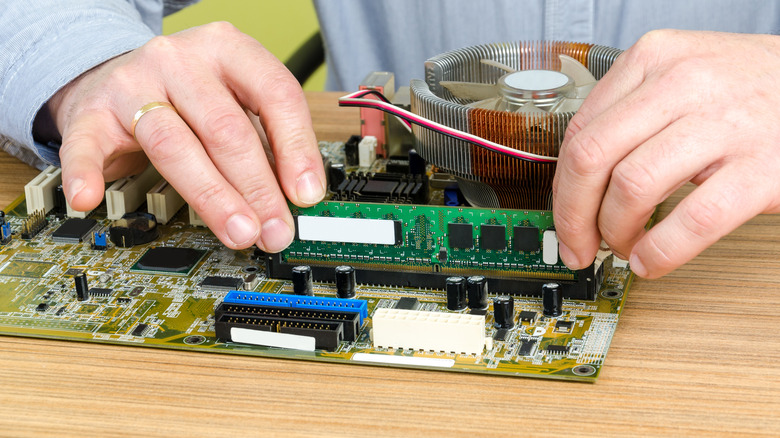10 Things You Need To Know Before Building A PC
There are some huge benefits that come with building your own PC. Firstly, you can tailor it to your exact needs whether those needs be gaming, video editing, or just simple office work. Building the exact machine you need can save you money, or give you a higher quality result in the end. You can also go wild with superficial stuff, like case design and RGB lighting if you're one of those folks that want their gaming rig to look like a carnival. You can fill it with the highest quality parts available, cut corners in certain areas, or save some serious cash by picking up a few second-hand parts. The point is, you'll know exactly what's going into your computer, and it will all be the exact parts you want.
You'll also have a unique experience when you perform a custom build. You will genuinely know your PC inside out and have a unique connection with the computer you put together. Building a rig will also give you a solid base to upgrade — if you put the thing together from scratch, putting in a new Solid State Drive (SSD), or switching out the Graphics Processing Unit (GPU) will seem like an easy task.
For a first-time builder, some parts of the process may be intimidating or confusing. So, to smooth the process we've compiled a list of things you should know before building a PC.
1. It isn't as hard as it looks
Although a complete outsider may see the PC building process as something highly technical and scientific. And if you're trying to impress someone who knows nothing about computers, it's easy to make the process sound even more complex by sprinkling in some jargon words like "overclocking," "RAM," and "BIOS." But on the contrary, it isn't complex at all, it's really quite easy. As YouTuber Jayz Two Cents has shown, even a five-year-old can (with a little assistance) put a PC together in a short space of time.
There are ways you can make things slightly more complex. If you want to back the jargon up and overclock it, there are extra considerations you'll need to make. If you want to fit a custom liquid cooling system, things are going to get even more complex. But if you're just piecing together a basic PC, there's nothing complex about it. The correct parts, some basic tools, a YouTube tutorial, and a free afternoon is all you'll need.
2. Now is probably a good time to build a PC
Over the past few years, the idea of building or upgrading a computer might have been off the agenda for PC gamers on a budget. The main thing making PC building cost-prohibitive was skyrocketing GPU prices. The graphics card has always been one of the more expensive parts involved in a computer build. It's also not something gamers want to skimp on, as it has a huge impact on a rig's ability to play games smoothly and push the limits of visual performance.
While you may expect to spend a lot on a new, top-of-the-line, graphics card, prices have been borderline ridiculous for a while. Cards were regularly selling out the second they hit the market and some of those were being resold for up to triple the manufacturer's specified retail price. This sometimes meant even a mid-range GPU could end up costing a PC builder more than they paid for the rest of their computer's parts combined. There were several causes for the price hike, but the two main factors were a global semiconductor shortage and the profitability of crypto-mining.
The semiconductor shortage is still ongoing, but the crypto crash has made crypto mining not worth the effort, at least for the time being. As a result, new cards are available for less than their MSRP for the first time in a while, and cheap second-hand cards are likely to become available to those who are willing to take the risk. In short, if you're thinking of building a PC, this might be your best opportunity in years.
3. A pre-built PC may actually be a better deal
Saving money may be a key motivator for some PC builders, but it isn't always a guarantee. If you aren't happy with used parts and just want a PC that meets a particular purpose, a pre-built one may actually be cheaper than a custom build. Some of them aren't actually bad either, so if you're trying to save money, not overly sold on the level of customization, and spot a good pre-built gaming PC — then you could be better off just ditching the idea of building your own entirely.
The cheapness of pre-built gaming PCs, when compared to custom builds, isn't directly related to the inflated price of graphics cards. It's more to do with the economics surrounding bulk purchases. PC manufacturers can get better deals on parts as they buy them in vast quantities, whereas the average consumer will only be getting one or two parts and building one PC every few years. So as GPU prices tumble, some pre-builts may remain a better deal than doing it yourself.
Pre-built PCs also come with an added bonus in the form of a warranty. While you get a guarantee on each part you buy, there are limitations that come with those guarantees. For example, your RAM will have a guarantee relating to manufacturing defects, but if you cheaped out on a GPU and it fried said RAM during a power surge, the guarantee won't cover it. When you buy pre-built, the whole machine will be covered for at least a year.
4. The parts need to be compatible
Computer parts have a large amount of cross-compatibility, but certain things won't work together. A motherboard will either be designed for AMD or Intel processors. Then there's a generational issue with parts like RAM — you're going to see DDR3, DDR4, or DDR5. Newer parts won't work on much older boards, and a certain GPU may require a certain generation of CPU or RAM. Then the PSU needs enough juice to power everything.
Incompatibility may also be subtle — everything may power on and "work" but the performance will be impacted. This could range from a PC that is majorly impacted to one that just isn't achieving the performance you would expect it to, but either way, you've wasted money. A good example of one part bottlenecking another is when you purchase a top-of-the-line GPU and offset it by massively cheapening out on the CPU. You won't get the most out of your very expensive graphics card in this sort of scenario, because the older, low-end, processor will hit its limit and hold everything back before the GPU is even stressed.
Then there are basic size issues. You'll struggle to fit a huge graphics card like an NVIDIA Titan in a mini PC build. It certainly won't be going in the PC's case. Luckily, you aren't on your own with any of this. Websites like PC Part Picker make the whole compatibility process simple. So plan any potential builds out on there before you start purchasing parts.
5. Static electricity is not your friend
Although launching lightning from your fingertips is cool in a VR Star Wars game, it's not something you want to do while building the machine you intend to play said game on. Although the chances of frying a component with an accidental blast of static are slim, the risk is still there. Given the cost of computer parts, that's probably a risk you don't want to take.
Static electricity builds up on your body when you pick up too many free electrons from surfaces around you. When you have too many free electrons, they try to find somewhere else to go, which usually involves them jumping to another conductive object. This is the little static shock you sometimes encounter when you touch something made of metal. The risk is increased by things like carpeting, polyester clothing, and dry air (via Family Handyman).
Unfortunately, many computer parts are highly conductive as your PC is just one big complex electrical circuit. To make matters worse, an electrical current in the wrong place can severely damage or destroy a part. It isn't all bad news as the static buildup is quite easy to mitigate. The simplest way to negate the risk of frying a component with static involves the use of an anti-static wristband. These only cost a few dollars and will take away the charge on your body by grounding you. Simply attach the band to your wrist or ankle and clip the other end to a grounded object (if your radiator has a green and yellow wire screwed into it, use that). An even easier, though slightly riskier, solution is to simply tap a bare metal part of a grounded object every few minutes to discharge any static buildup.
6. Operating systems cost money (most of the time)
If you've only ever bought pre-built PCs and laptops, you'd be forgiven for thinking operating systems were free. Not only does your HP, Lenovo, or Dell come with Windows already installed, but Microsoft will badger you into upgrading for free whenever their next version of Windows comes out.
However, if you're building a PC you will have to pay for the operating system — most of the time. A copy of Windows 10 will still set you back $139 if you want to buy it directly from Microsoft. If it was an actual component and not software, this price would put it roughly on par with a decent one-terabyte solid-state drive, a motherboard, or 32GB of RAM. However, there are a few ways around paying a hefty fee for your operating system. One option is Linux, a free, open-source, OS that has been around for years. It may require a bit more technical know-how than Windows, but Linux compatibility has really improved in recent years.
If your heart is set on Windows, there is a legal grey area you can inhabit if you choose to. Various key reselling websites have legitimate Windows keys available for a few dollars. You can purchase a key and use it to activate a copy of Windows 10 or 11. This is all perfectly legal and in no way piracy. Microsoft doesn't really like the practice, though, and reserves the right to torpedo your OS if it determines the key was not purchased from what it considers to be an official source. Finally, you can just not activate your copy of Windows. Some features will be restricted, but the OS will still work.
7. There are parts you shouldn't cheap out on
Few people have unlimited funds, so it's likely most PCs are built with a budget in mind. Budgets mean compromise, and those compromises include either sourcing cheap used parts, or just buying a lower quality product. This is fine in a lot of cases. If you go for cheap RAM or a hard disk drive instead of a solid-state drive, you may notice a performance impact but it's nothing that can't be fixed with an upgrade once you have a bit more money.
But there are a couple of parts you should never skimp on. With one or two components, buying a quality part the first time around will make upgrading easier and could even prevent your entire desktop from being destroyed. The first part you shouldn't cheap out on is the motherboard. Motherboards are what hold the full rig together, so there's a chance a poor one could bottleneck the more expensive parts you bought with the money you saved. They also aren't expensive when compared to other parts. You can get a good, recent, motherboard for less than $200. Buying a more recent motherboard means you're probably going to be able to upgrade components like RAM and the CPU easily a few years down the line. If your motherboard is already a few years old when you first buy it, it may need upgrading too and at that point, you're basically building a new rig.
However, the one part you shouldn't cheap out on under any circumstances is the power supply unit. A cheap PSU will not only leave you without enough wattage for future upgrades — but it could also fry your more expensive components.
8. Fitting the CPU is the hard part
One part of PC building can still make you sweat even after you've got a few builds under your belt — fitting the processor. Most parts of a build simply click together or screw into the case, and the CPU isn't really that different. However, the consequences of messing up the CPU installation are far greater. The processor is one of the more expensive PC parts, and it contains a number of delicate pins on its underside. Dirt or thermal paste on these pins will at best leave you with an irritating cleaning job and at worst cause a short that could ruin the CPU entirely. Then there is the chance of bending the pins during the installation. Again, you may be able to carefully bend them back but you also may have broken your CPU.
Once your CPU is in place you have the additional steps of applying a thermal compound, which helps transfer heat between the CPU and heat sink and attaching the heat sink itself. Again, things can go wrong here. Forgetting the thermal paste could cause your processor to rapidly overheat and become damaged. Applying too much thermal paste could lead to a tedious cleaning job at best, and a short on the motherboard in a worst-case scenario. Then there's getting the best coverage from the paste, what should you use? A dot? A cross? Luckily, YouTuber Tech Illiterate tested several methods and shared the results — so picking a pattern shouldn't be too hard.
9. Don't panic if it doesn't work straight away
Seeing your PC come to life for the first time is a very rewarding feeling. The trouble is, it may not even start — and if it does there's a fair chance it won't boot. So have you messed up badly? Have your rookie mistakes ruined everything? Did you just turn hundreds, even thousands of dollars worth of computer parts into scrap? Probably not, the chances are you've overlooked something simple.
You have every chance of doing everything right on the first build, but if you didn't there's no need to panic. There are a bunch of tiny, easily fixable, things you may have forgotten that will stop your new PC from booting. It could be as simple as forgetting to actually turn the thing on — the majority of PSUs have an on/off switch on the back that has to be flipped before the PC starts working. If it still won't turn on, did you connect the front panel cables correctly?
If you're still having trouble, check the RAM is seated properly as this is a common issue when a PC fails to boot. Both of the retaining clips should audibly click when you firmly press the RAM into place. You should also check your motherboard's manual to ensure the RAM is in the correct channels. Then check all of your power cables are in place? Did you install all of the motherboard standoffs or is it touching the case and shorting out? Finally, did you install the CPU properly as most systems will instantly shut down if it begins to overheat (via PC Gamer). There are many simple reasons a PC could overheat, just consult Google before you start to panic.
10. You can always upgrade later
When building a PC, you'll have a budget in mind and may have to compromise to stay under that budget. However, that is easier said than done. Companies usually release a range of products, and temptation can kick in when you see what you could get for a few dollars more. That all adds up, and soon the price of your sub $1,000 build could have doubled. There is a way around this if you just stay grounded and design your rig for upgradability. Future-proof parts like the motherboard and PSU, while compromising on others.
Some parts are easily upgradable. If you go with a 500 GB SSD to save a few dollars you can be safe in the knowledge adding to that storage later is neither expensive nor difficult. The same applies to RAM, though you should use the same RAM if at all possible, putting 16GB in then snapping an extra 16GB in when you have more money is probably the simplest upgrade you can do. Swapping out a GPU might be more expensive, but even that isn't too difficult.
The point is, a build doesn't have to be a one-off. It can be an ongoing project that gets better as time goes on. Feel free to go fairly basic with your first build, you can always build the rig of your dreams one piece at a time.
